The most important step Danielle made this week is the formulation of the costumer journey. We distinguish four different kinds of users: The Plug-and-float, De-kleine-onderzoeker, the Lab manager and the QS-wizard. The Plug-and-float is the individual user who wants to improve the quality of her own meditation session. She focuses on looking at the data and improving the meditation through actuation. De-kleine-onderzoeker wants to do research about the environment. She wants to know which actuation has the most positive effect. She organizes experiments for herself or for a bigger group. The Lab manager maintains the suits for a bigger group. She is able to work on the sensors and the actuation by adding or removing sensors or actuators. The QS-wizard wants to make new applications by herself. For every kind of user, Danielle described the way how they have to use the software. This costumer journey is the starting point for the software.
On Monday Danielle went to ProtoSpace in Utrecht to meet the software engineer and the system architect to discuss the data server. We learned that the micro controller has to be programmed in a more modular way to make it future proof. This makes it more complex than we thought first.
Today we worked on the sitting sensor. The data we got from the old one where to unstable. The sitting sensor is the on/off button for the system. As soon as you are sitting it will be logging your session. But that also means that the whole session is interrupted as soon as the sitting sensor does not work. We knew that the surface of the sitting sensor has to be bigger so that it is no problem if you move a little. But the one we had was too big, so it was pretty expensive and not comfortable.
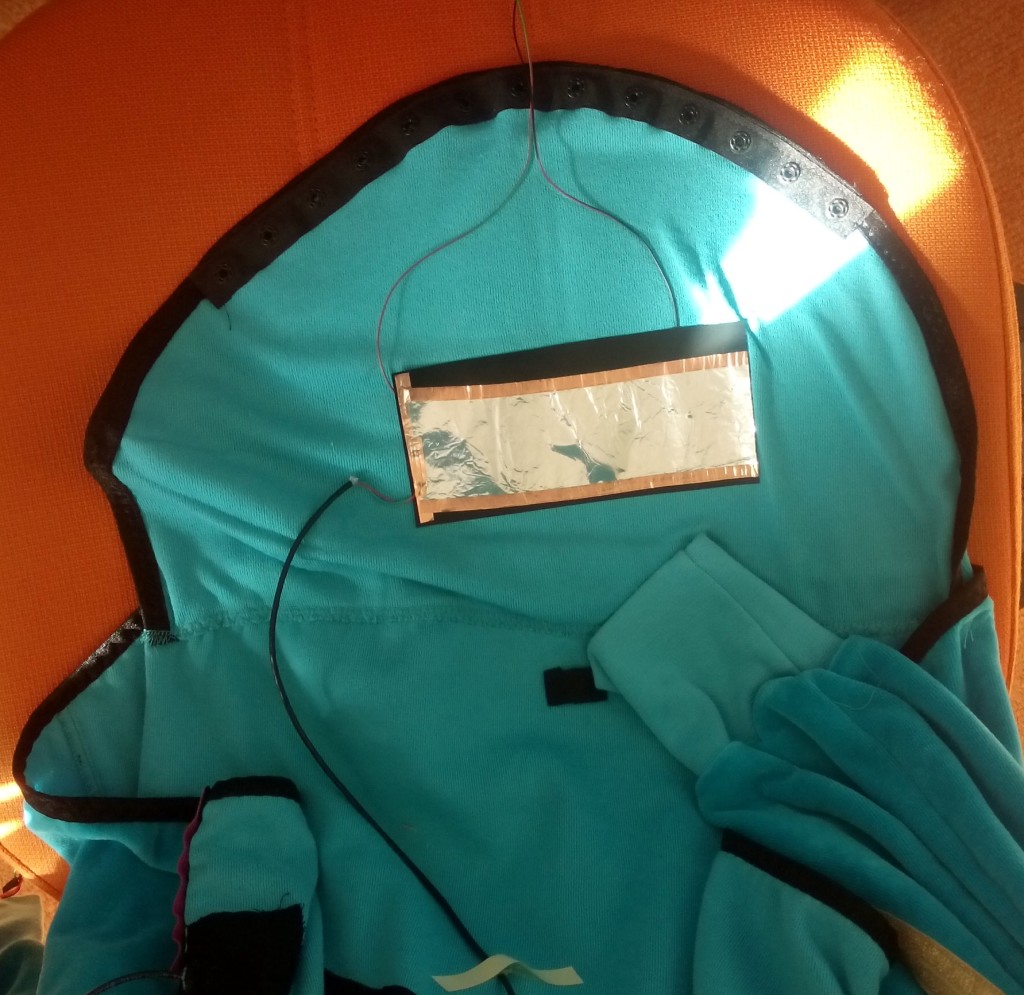
As you can see in our notes below the conductive foil was 15×7 cm first. Before sitting the
value was about 880 or 860. While sitting it was about 140. That is a big range which makes it possible that you can move while meditating without interrupting the session. We cut the conductive foil in half to test if it would work if it was smaller. You see that the range of the value became much smaller and the sensor was actually too unstable again. This might have also been caused by lack of conductivity. We cut off the tape as you can see below.
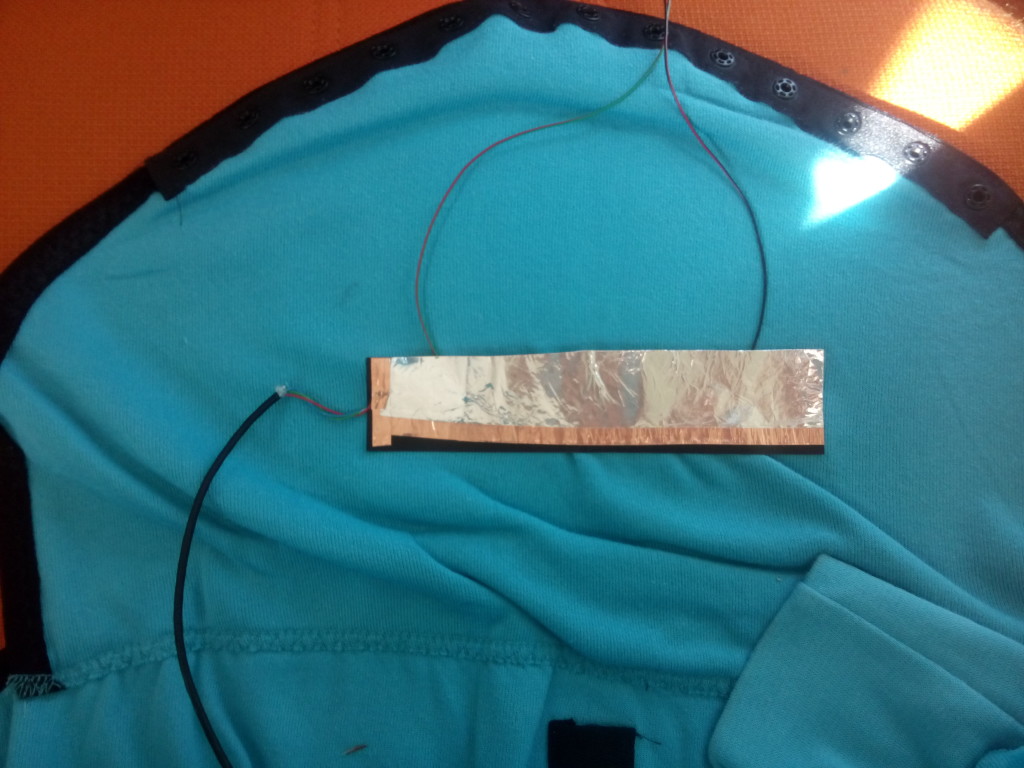
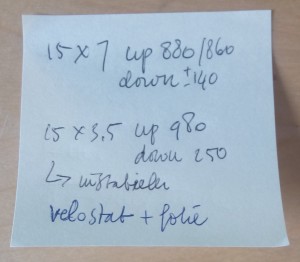
But we thought maybe the conductive cloth we have conducts better than the conductive foil, so that the small one of 15×3,5 cm would be enough to get a bigger range. We just tried and as you can see our experiment was successful. With the conductive cloth from 15×3,5 cm we got the best values with the biggest range ever. For now this one is our choice. Next week we have to work on how you can include it in the suit.
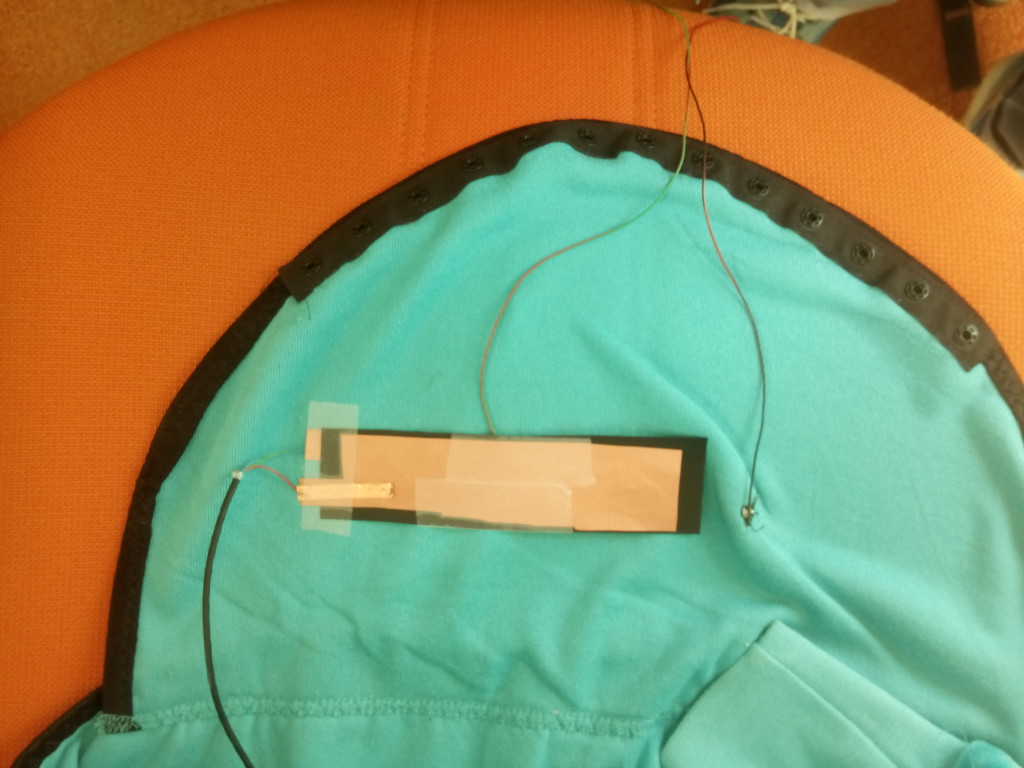
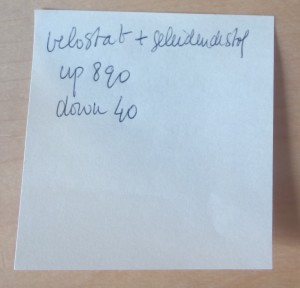
I see how difficult it is to be the team leader. Danielle has the vision.
She wants to reach her goal, but sees how ambitious it is. It seems very difficult to me to stay true to your own vision if there are still organizational problems you have to solve. We try to formulate a common vision so that every team member knows our plans. This vision has to be the base everyone is familiar with so that every team member goes for it. But I am optimistic: Together we will get there!